What are the tanks for the bath and how to install them?
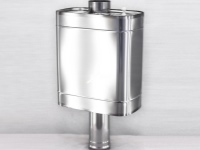
Water tank, like a stove or a broom, - an essential attribute of any bath. You can be limited to a tank with cold water, and for its heating use a boiler. However, If you do not want the energy bills to mar the pleasure of visiting the sauna, it is best to install a special tank for hot water, which will receive heat from the stove. To choose the right option, you need to know what models of such tanks exist, what materials they are made of, what are the pros and cons of each type, and how to determine the size of the tank. About all this we will tell in the article, as well as describe the technology of installation of the bath tank.
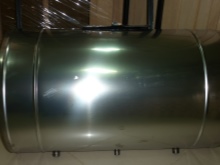
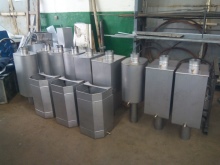
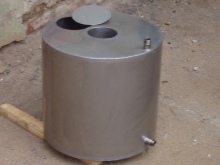
Features
Without hot water in the bath can not do without. It is needed not only to wash, but also for other purposes: to give a broom boiling water, as well as to wash clothes and rinse the floors.
You can buy a stove with a water loop, in which the vessel with liquid, built into the heater, acts as a heat exchanger. In this way, two tasks are solved simultaneously: heating the room and organizing the supply of hot water.
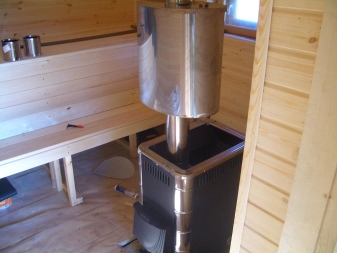
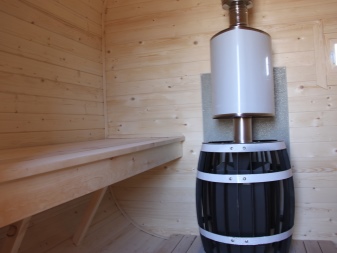
However, it is more rational and cheaper to use the heat of an existing stove to heat the liquid, placing the tank either in the immediate vicinity of the furnace, or connecting the tank to it by special pipes.
Tanks designed for boiling water must meet certain requirements:
- withstand high temperatures;
- do not rust;
- rapidly heat up and retain heat for a long time;
- not to be deformed, durable, wear-resistant and have a long service life.
The tank for the bath can be purchased in a set with the stove, or you can buy separately - on the market there is a wide and varied range of such containers.
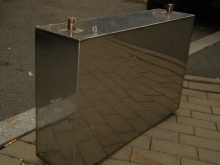
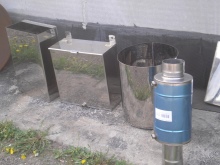
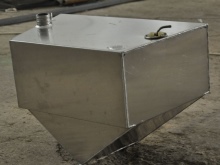
Overview of types
According to the place and method of location there are several types of tanks.
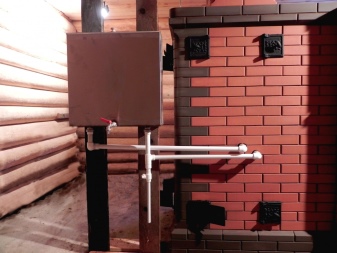
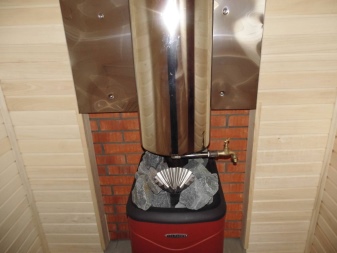
Built-in
This is the most "ancient" type of tanks - such a design was used by our ancestors, but even today it remains relevant. The tank for water is placed directly above the stove so that the bottom of the tank was in contact with the flame. You can draw an analogy with the pot on the kitchen stove. Boiling water is poured either from the faucet or scooped from the top with a ladle.
The advantage of this design is that the water is heated quickly, and it stays hot for a long time. And also the built-in tank does not take up much space and is easy to install.
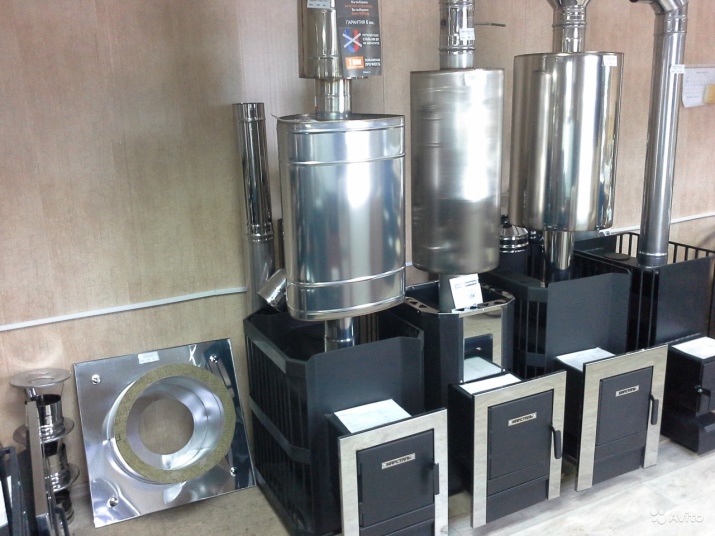
However, it also has significant disadvantages.
- The width and length of the tank can not exceed similar parameters of the stove, therefore, the amount of water that can be poured into it is limited, and this makes it unprofitable to use such a tank for a large group of people. Such a design is more suitable for a family of 2-4 people.
- Since the tank is in contact with fire, it must have thick walls and bottom (not less than 1 mm), and this increases its overall weight and price. Such tanks are usually made of stainless steel or cast iron.
- While the stove is working, the tank should always have water in it.
- A lot of heat energy is spent heating water, which reduces the amount of heat released.
- Water will constantly boil and evaporate, and it is not possible to remove steam in such a design

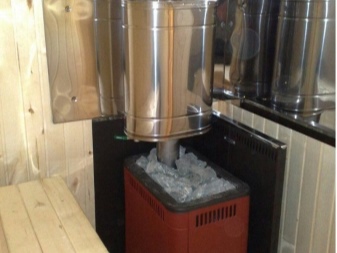
Hanging
Tanks of this type are hung with metal hooks on the wall of the firebox. Like the built-in, they get a lot of heat from the stove, and therefore the water heats up quickly, keeping its high temperature for a long time. The overhead tank should be made of stainless steel. Enameled models for such a tank design can not be used - cracks can form on them, which will lead to rust and, consequently, contamination of water. In addition, there is a problem with boiling and the impossibility of steam extraction, as in the previous type.
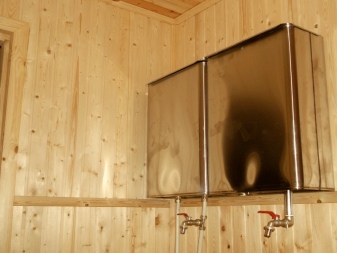
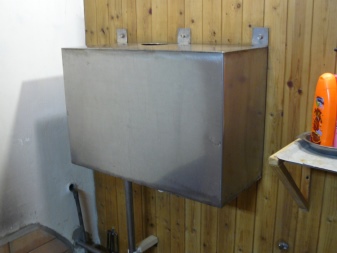
Remote
The main advantage of this type of tanks is that they can be placed in any room of the bath, and this is especially advantageous for steam rooms, small in area. In order to save space remote tank can be installed in the anteroom, wash room or even in the attic (in the latter case, it is recommended to cover the tank with foil or other insulating material). Most often apply wall mounting, hanging the tank with special loops.
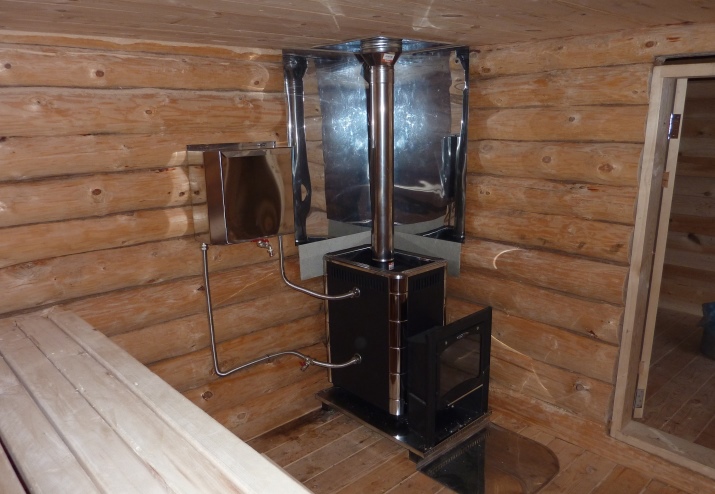
Consider the principle of water heating in this case. The furnace and the tank are connected with each other by metal pipes, one of which the cold water enters the furnace with a heat exchanger and, heated there to the desired temperature, the other circuit returns back to the tank.
Therefore, such tanks are also called contour tanks. The variety of models is huge. And there are vertical remote tanks or horizontal tanks under the contour.
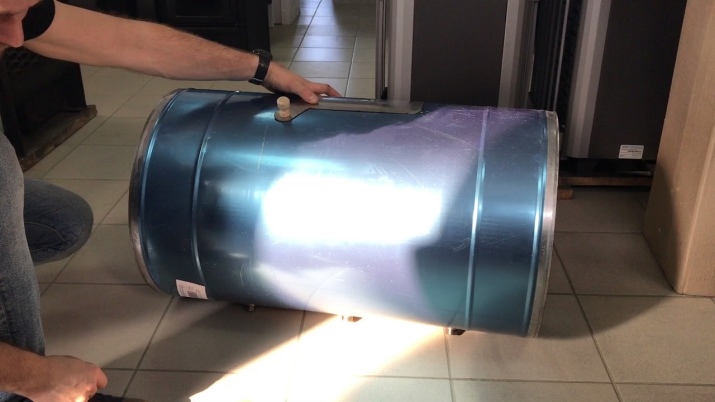
On the pipe
This is the most convenient, compact and therefore often used design. The tank is placed on the chimney so that the pipe is in the center of the tank. It is placed in a particular area or along the entire length of the chimney, even taking over the attic room, if necessary. The shape of the tank can be chosen: oval, rectangular, round, cylindrical or triangular. If desired, you can even install a shower hose into the tank and pour water after visiting the steam room.
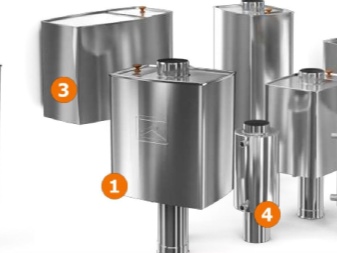
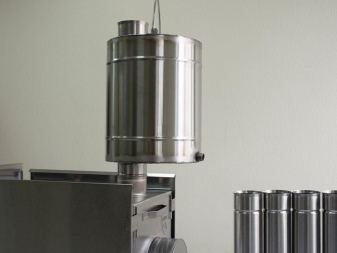
The design has significant advantages:
- the ability to install a tank of almost any size, and thus provide yourself with a large amount of hot water;
- fast and even heating of all liquid;
- The tank blocks the fumes of oven smoke, protecting against carbon monoxide emissions;
- Even when you have finished heating the stove, the water does not cool down for a long time - the heated pipe keeps it hot all day.
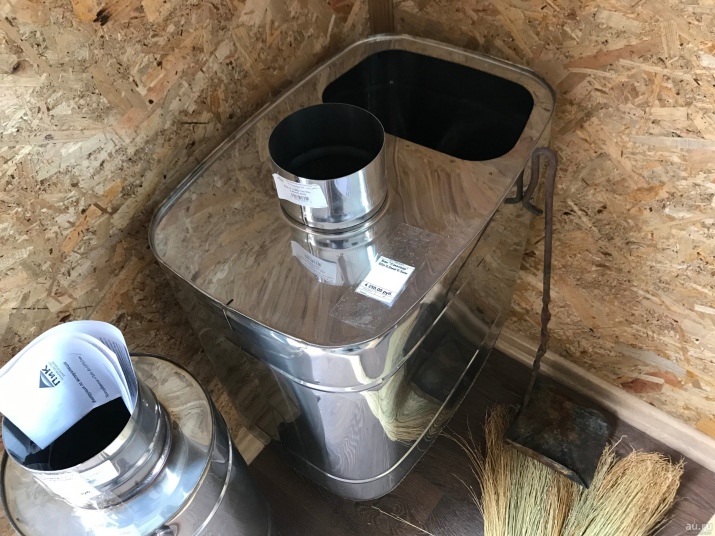
These models also have disadvantages:
- in the tanks, located under the ceiling, it is problematic to pour water;
- It is impossible to determine how much liquid is left in the tank, especially if it is set high above the stove;
- Such a tank cannot be mounted on a brick chimney;
- if the tank has large dimensions, then you will have to "suffer" with the installation;
- so that in winter the structure did not freeze and did not stop functioning, it is necessary to necessarily drain the remaining water after the completion of bathing procedures.
Most of the tanks on the pipe refers to the so-called samovar type, because the mechanism of water heating is similar to that of a samovar.
However, there is also a backpack tank. It differs from the samovar tank in that it is not "threaded" on the pipe, but attached to it by means of special metal "straps" located above and below - hence the name.
In the center it has a depression, which "clings" to the chimney.
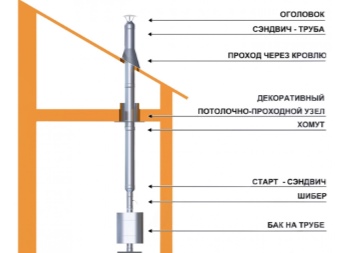
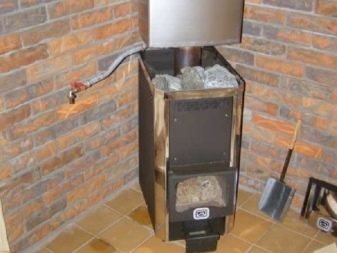
Materials
The second important criterion when choosing a tank - it is the material from which it is made. On this parameter depends on how long the tank will serve you, at what speed the water in it will be heated and cooled.
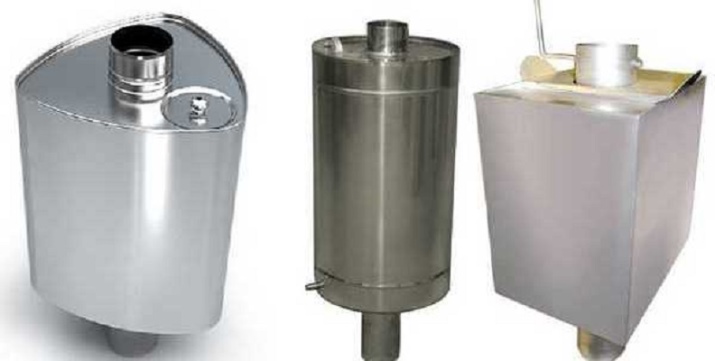
Cast iron
This is the first material, of which they began to make bath tanks. Although today it has lost its former popularity, giving way to the leadership of stainless steel, but its advantages remain undeniable. Cast iron tanks are very strong, reliable, durable, they do not deform at all. Cast iron tank is resistant to rust and fungus. Due to the low thermal conductivity of the material, the water in it keeps a high temperature for a long time, but it takes a lot of time and fuel to heat up.
The disadvantages of cast iron can also include its heavy weight, which complicates the transportation and installation process of the tank. And to find a tank from this alloy in our time is not so easy - even if you get it, it will cost a lot of money.
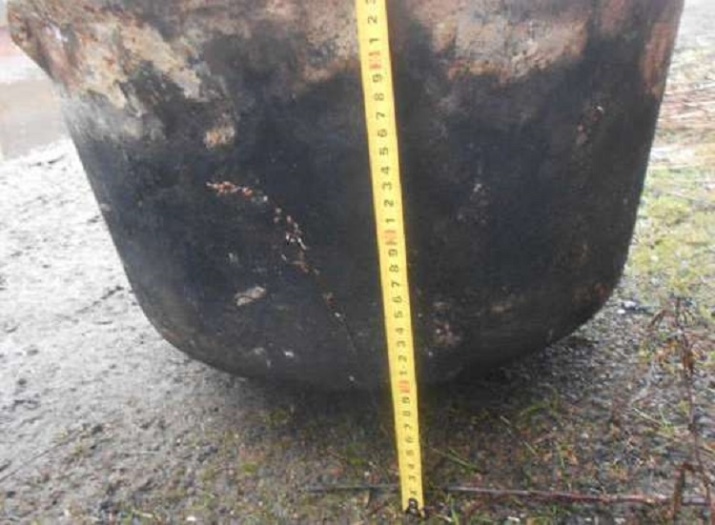
Stainless Steel
Most tanks for modern baths are made of stainless steel. This material has many advantages over the competition.
- Lightweight (especially compared to cast iron), which allows you to install the tank yourself, without resorting to the help of specialists.
- Like cast iron, stainless steel does not corrode, so constant humidity and high temperatures are not afraid of it.
- Metal is flexible and pliable, so it is possible to "mold" the tank of the desired shape (parallelepiped, cylinder, rectangle, square, cube and other options). Thus it can be harmoniously "built" in any interior.
- Stainless steel tanks are made for the bath of all kinds: remote, hinged, mounted on the pipe. Only the tanks built into the furnace, it is better to do of cast iron.
- Thanks to the high thermal conductivity of water heats quickly, however, stays hot for a short time.
- This strong and hard metal is difficult to deform. It can withstand heavy loads, without changing its shape.
- The democratic price of stainless steel tanks is another reason for the great demand for them. However, too cheap models are made of a low quality alloy, so it is better not to buy such a tank - it will not please you for a long time.
- Stainless steel tank looks aesthetically attractive, especially if you polish to a shine its mirror surface.
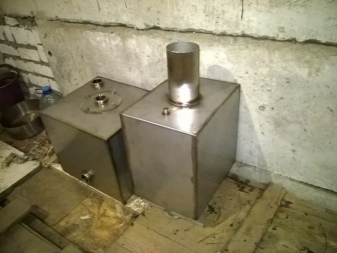
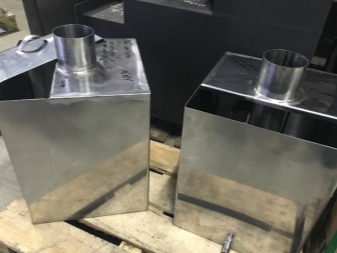
Enamel
Enamelled tanks are also inexpensive and resistant to corrosion, but they are rarely used as bath tanks. The reason is that they are very sensitive to mechanical effects. It is enough of a soft blow to break off a piece of enamel, and then a rust will form in this place. If the chipped area is small, you can restore the coating with a special heat-resistant paint. However, if there are several crumbled areas or a wide area of damage, the tank becomes unsuitable for further use.
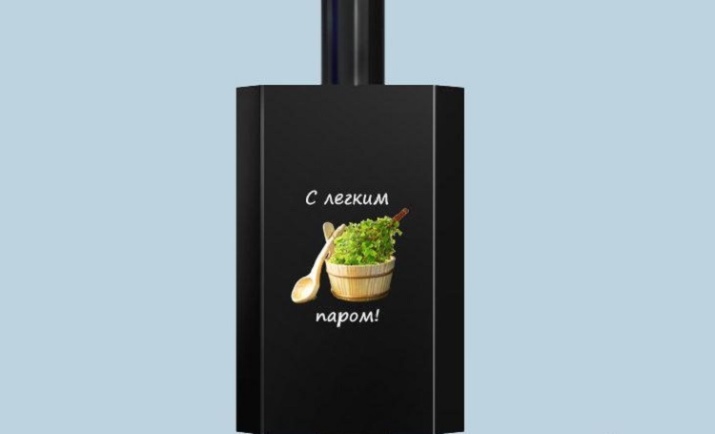
Enameled tanks are best suited as remote options. But to install them on the stove can not - contact with the flame is destructive to such a fragile coating.
Budget alternative to the enameled tank can be a pot of aluminum. Just put it on the sauna brick or metal stove, and heat water in it. However, this option is only suitable for use by one person at a time, because the size of the kitchen pot is limited.
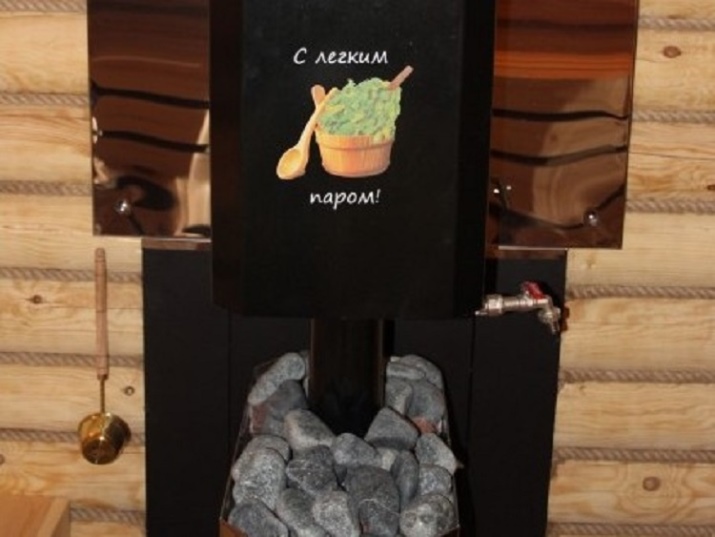
Plastic
Plastic tanks can be installed in the bath, but not in the steam room itself - there is a high risk of them catching fire. Also, they are unable to hold heat for a long time. However, plastic tanks have their own advantages: they do not rust, they weigh little, they are easy to move and mount, so these tanks have their admirers.
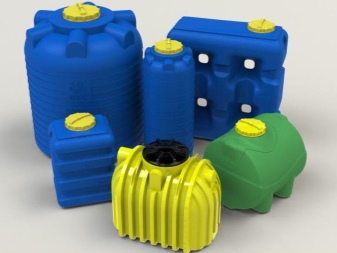
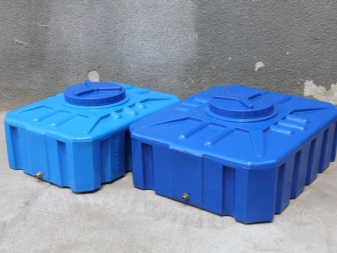
Ferrous metals
In addition to cast iron, they include iron and alloys based on it (above all steel). Metal containers have good strength, reliability, and can withstand high thermal and shock loads. However, they are prone to corrosion. Therefore, before using them for their intended purpose, it is necessary to coat the surface of the tank with a special composition containing zinc, which will prevent the occurrence of rust.
Galvanized black metal tanks will last until the paint begins to crack. Then it will have to be reapplied to renew the corrosion protection. Conventional paints can not be used - under the influence of high temperatures, they will release into the air toxic fumes that can poison you. Galvanized tanks are in demand because of the low price.
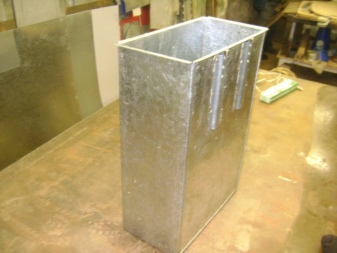

Selection Tips
Once you have chosen the material, type and shape of the bath water tank, it is time to decide on its dimensions. Calculate the required volume of the tank is very simple.
If the bath will be visited by 1 person, he will need about 10-20 liters of water at 1 time. For a couple 50 liters is enough, for 3 households - respectively 70 or 80. If 4 or 5 people wash in the bath at the same time, the water consumption will be from 100 liters to 125. And so on. The tank is better to take with a reserve - a capacity of 10-20 liters more than the actual flow of liquid.
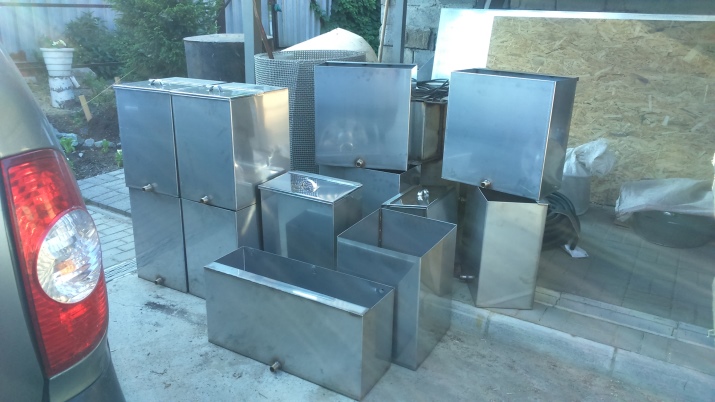
If the bath is planned to use several people at once, and will require a large volume of hot water and high speed of its heating (for washing or laundry), then instead of the furnace is more appropriate to use TEN (tubular electric heater).
You can buy ready-made versions of storage tanks with heating, made of stainless steel. However, such models are flammable, and it is risky to use them in conditions of high temperatures and abundant humidity.
Use the tank should be safe and comfortable. Place the hot water tank so that there is no risk of scalding by touching its hot wall. Provide the most convenient way to draw water. Highly located tanks should be equipped with taps.
The question of price is also important. When buying a tank should not save much - tempted to buy a cheaper version, you can get a fake (especially in the case of stainless steel) or buy a short-lived model that will have after a while to change.

Installation nuances
It is not difficult to install the tank on the pipe by yourself. The scheme of connecting the tank to the furnace can be divided into the following steps:
- cut off the part of the pipe that runs from the furnace to the ceiling;
- at the outlet of the furnace set nipple (optimum length - 10 cm);
- connect it to the pipe, which is built into the tank (if their diameters do not match, use an adapter);
- for reliability fix the construction with metal staples;
- it is important to hang the tank properly - between the ceiling box and the container must always leave a gap of about 20 cm;
- the upper section of the pipe on the tank attached to the ceiling by means of a segment of the chimney (they connect directly to each other, and if the dimensions are different, then through the adapter);
- the final touch - to apply a heat-resistant composition to the joints and seams, to prevent the penetration through the possible holes harmful to breathing stove gases.
Now, knowing the features of all types of bath tanks for the stove, you can easily choose the right model to suit your individual needs.
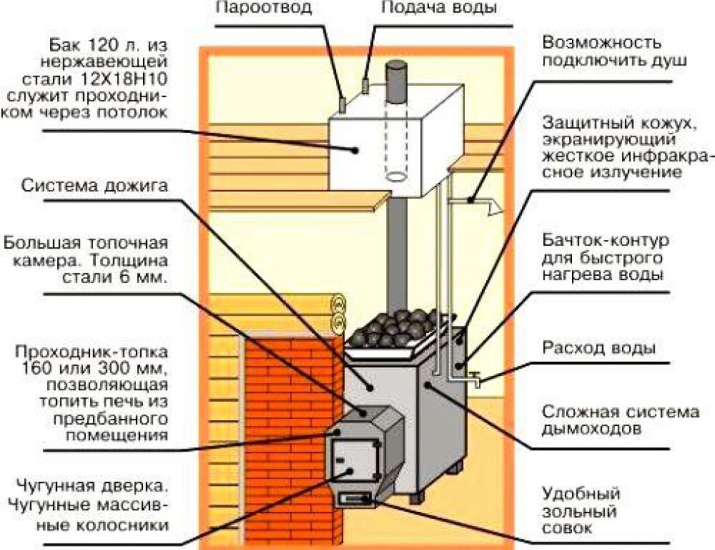
About the sauna stove with a water tank, see below.




